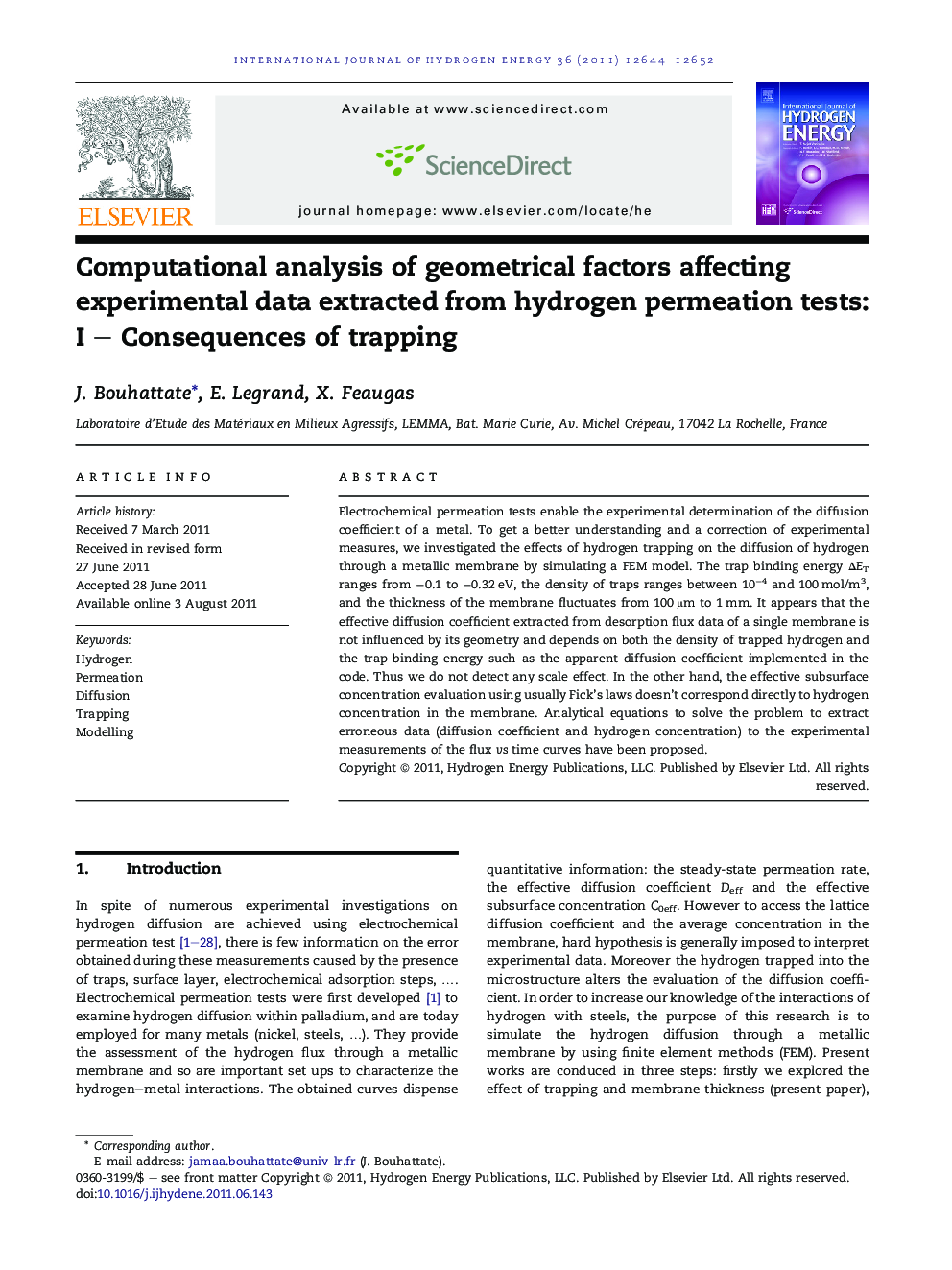| Article ID | Journal | Published Year | Pages | File Type |
|---|---|---|---|---|
| 1282467 | International Journal of Hydrogen Energy | 2011 | 9 Pages |
Electrochemical permeation tests enable the experimental determination of the diffusion coefficient of a metal. To get a better understanding and a correction of experimental measures, we investigated the effects of hydrogen trapping on the diffusion of hydrogen through a metallic membrane by simulating a FEM model. The trap binding energy ΔET ranges from −0.1 to −0.32 eV, the density of traps ranges between 10−4 and 100 mol/m3, and the thickness of the membrane fluctuates from 100 μm to 1 mm. It appears that the effective diffusion coefficient extracted from desorption flux data of a single membrane is not influenced by its geometry and depends on both the density of trapped hydrogen and the trap binding energy such as the apparent diffusion coefficient implemented in the code. Thus we do not detect any scale effect. In the other hand, the effective subsurface concentration evaluation using usually Fick’s laws doesn’t correspond directly to hydrogen concentration in the membrane. Analytical equations to solve the problem to extract erroneous data (diffusion coefficient and hydrogen concentration) to the experimental measurements of the flux vs time curves have been proposed.
► We simulated permeation tests taking into account trapping of hydrogen. ► We treated the flux vs time curves as pseudo-experimental data. ► We examined changes between the FEM and the analytical parameters. ► We do not detect any scale effect. ► Analytical equations from the experimental measurements have been proposed.
